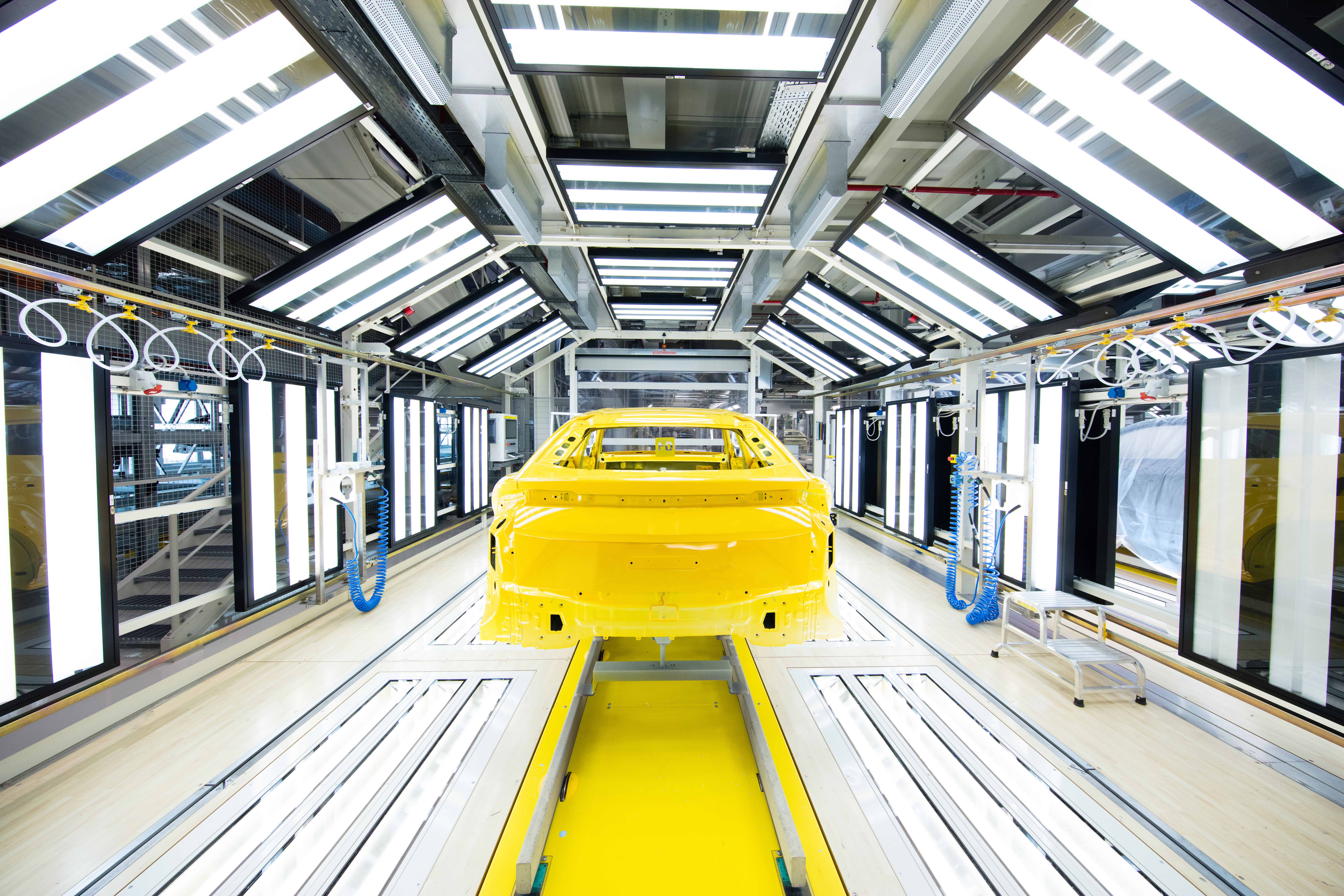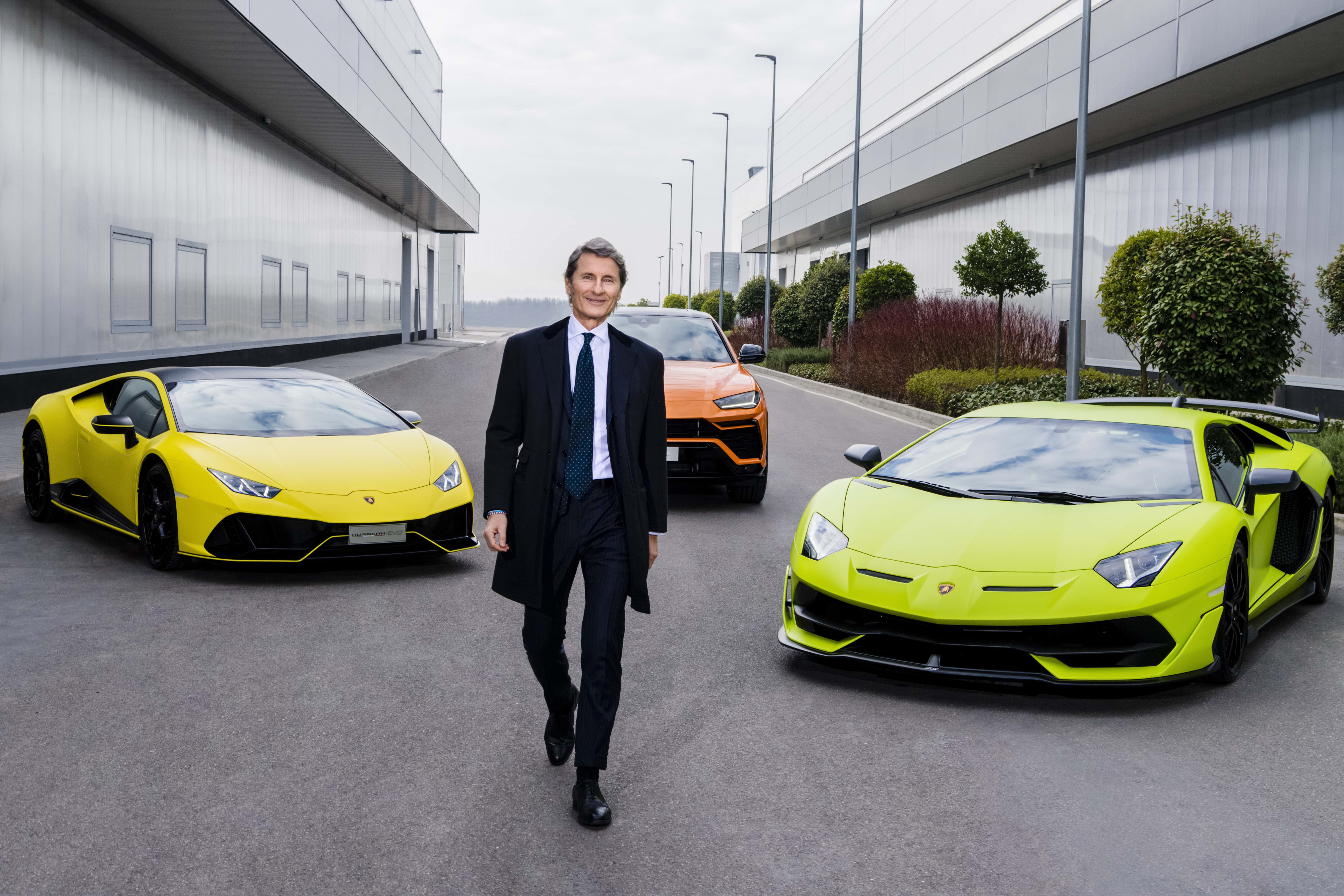Forza Verde: Lamborghini CEO Stephan Winkelmann’s green vision for the raging bull
“Powerful”, “obnoxious”, “brutal”—all words associated with Lamborghini. At the dawn of a new era, CEO Stephan Winkelmann is ensuring “sustainable” and “green” join that list. We visit the Raging Bull’s HQ to find out how.
Robb Report, Summer Issue, 2023 (PDF)

The Emilia-Romagna region in the north of Italy, which includes Bologna, Modena, Parma, Maranello, and where our story comes from today, Sant’Agata Bolognese, is not lacking in myth or history. It’s home to Italy’s finest exports and hallowed ground for those seeking the sensory. Here, history pushes innovation and myth perpetuates it. Although not as oft-quoted as his Maranello rival, Ferruccio Lamborghini—entrepreneur, winemaker, engineer and tractor-maker- turned-supercar legend—truly embodied the region. Rivalry aside, the story most telling about Lamborghini himself was that he never planned on getting into sports cars at all, “But I knew a better car could be built,” he famously said.
This forward-thinking mindset framed by betterment has been guiding Sant’Agata ever since. Lamborghini has survived several hardships, including a drop of almost 50 percent post-GFC sales. As that headline went worldwide, CEO Stephan Winkelmann was busily navigating the storm, future-proofing from all angles. This not only led to the creation of the company’s highly successful life raft, the Urus, but in 2009, saw new environmental solutions implemented, with Lamborghini becoming the first Italian Automotive company to earn European and international green certifications. By 2015, it had achieved carbon neutrality.

One could argue that a Lamborghini, by nature, is a greener car to own. Less than 10,000 are built annually, the average mileage is low and each is held as a work of art that rarely falls to scrap. In fact, according to the marque, 80 percent of Lamborghini vehicles produced in the past 59 years still exist today. Still, it’s not an argument the CEO wants his customers, nor Lamborghini, to lean on too much. “We have a social responsibility,” Winkelmann says. “No matter how big or small you are, you must do your part. On top of that, we are fulfilling a dream.” Winkelmann’s brand awareness is astute in that he agrees it not only matters what Lamborghini owners think of their car, but their neighbours too. Granted, that might be an uphill battle for the Raging Bull.
“The discussion about environmental issues is so emotional that you will never get to explain, ‘I’m just going a couple of thousand miles, and they’re only producing so many.’ The discussion is already over,” says Winkelmann. “It’s about emotions. If you’re willing to play or be part of the game in the future, you cannot find excuses. And no legislation or political loopholes, just because you have the money to do so. This is something we want to avoid.” Creating an electrified supercar— which the marque will do by the end of the decade via a range of hybridised models, starting with the Aventador replacement—and calling it a day is not an option if the brand wants to retain poster-car status for the next generation.

“Our name is bigger than our footprint,” adds Winkelmann. “Therefore, it’s also important every customer continues to
be proud of what we’re doing.” Future Lamborghini pride will come from a strategy that includes a 50 percent emissions reduction by 2025 and 100 percent by 2035, and a boastful $2.7 billion of investment made in the next four years alone. Despite being on track, Winkelmann admits the journey from here is one of the hardest in the OEM’s history. So how is Lamborghini doing it? The pursuit of tangible and quantifiable emissions reduction started at a hyper-local level via a holistic, 360-degree philosophy that forced the factory to reconsider its output end-to-end. The local approach has led to increasing R&D in technical and composite materials (which includes collaboration with NASA), alternate energy solutions and work with local businesses, scientists and social enterprises.
For example, two circularity projects now look at new ways of repurposing carbon fibre and interior leather offcuts in both vehicle and non-automotive branded products (such as small leather goods). The exploration of alternate energy, such as biomethane—a gas produced from the fermentation of agricultural wastage— as helped with energy needs. Biogas is utilised for heating and cooling through a partnership with a nearby plant, which directs thermal energy into a closed loop of water sent underground to the factory for internal heating. (A new biogas plant is in development and will power 65 percent of the site’s gas needs—a notable and timely shift from natural gas.)

Elsewhere, a rethinking of logistics now sees parts and Urus shells arriving from Volkswagen in Zwickau, Germany, via rail instead of road. This lowered the journey’s CO2 emissions by 85 percent and now has a transit time of just 48 hours. Meeting the complexities of Lambroghini’s Ad Personam customisation program with green strategies required rethinking the traditional factory line paint shop. Hence, Lamborghini’s Urus paint shop is one of the few in the world that operates using a modular, vertical system which produces the super-SUV by demand and can create any colour the customer desires.
It’s also one of the most efficient, with a 30 percent smaller footprint than paint shops of equivalent capacity. The revolutionary verticalisation of the plant means the Urus’s journey is more like a snakes and ladders process, than a line, so no car is ever left idly waiting. The paints are 95 percent water-based and magnetically charged, which minimises overspray in a remarkably effective way. Any drips are funnelled into a waste system made of cardboard cubes that are broken down and recycled, and at least 15 percent of the industrial water is also recirculated. A post-burner technology recovers and reuses heat for the ovens, emissions from solvents are minimal, and a centralised thermal oxidation plant treats the discharged air—the building doesn’t even smell like paint, if you can believe it.

Out-of-house initiatives include bio- science experiments at Lamborghini Park, a picturesque parkland area near the factory. Here, young oak forests, bio-rich wetlands and 13 beehives fuel research into reforestation and the impact of pollutants, industry and agriculture with the help of local and international researchers. For anything external, suppliers are rigorously vetted and will be in the future, too— including across electrification needs.
Visiting Sant’Agata at a time when high- powered, evocative and roaring V10 and V12 engines are at their technological peak, yet also in their twilight, comes with sadness. Winkelmann nods in agreement. “For me, it is sad—I’m a car guy and an ICE guy,” he shrugs. “But legislation is putting it to an end if you like it or not. I look at the younger generations. I have a boy—he’s 22. He’s not interested in cars. But when he speaks, there is a background noise around the environment. If I speak to young kids, even if they are enthusiastic [about cars], there’s always this, and it will grow.” Winkelmann pauses. “But even if it’s sad.
I think there will be a moment when battery technology will be better than today’s internal combustion engines in terms of performance and weight. So there will be generations that will compare the cars differently.” Will synthetic fuel save us? Winkelmann holds doubts about mass adoption. “I am seeing it more, but it’s a moving target,” he says. “There will be less fuel available, maybe only synthetic fuel. And this will likely be more expensive. Maybe it will only relate to those cars
in the hands of our customers, which will then be historical cars.”
When we meet, Winkelman is in the throes of launching the Raging Bull’s final ICE car, the Huracán Sterrato, AKA, the
safari Huracán. This off-roader will be launched at Art Basel in Miami and is a sentimental, inspired last hurrah. “This is a car which is an off-road, super sports car. It’s something I have always wanted to do but we never had the opportunity. And, well, now we’re doing it. “This car makes it very difficult [for others] to follow in our footsteps. It’s unexpected and therefore is exactly what we’re aiming for. We are an aspirational brand. And we are brave, and if you are brave enough, you do things that nobody else has done before. And this creates the unexpected.”

Aside from taking some of the environmental burden off the shoulders of the marque’s customers, what will a Lamborghini of the future look like? “It will have to always be very different from the cars of today, but always immediately recognisable,” the CEO says, somewhat coyly, adding that performance comes first—emotion runs third.
Although his beloved engines are no more, Ferruccio Lamborghini’s spirit lives on at Sant’Agata. “I think it’s pretty clear now that we cannot, and we don’t want to step out or away from this social responsibility,” Winkelman reflects. “We must accept the challenge, look forward, and make something out of it. And this is the beauty of it. We can do something and do it even better than before.”
lamborghini.com